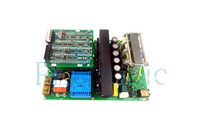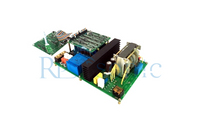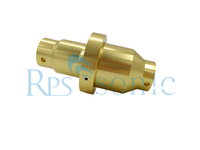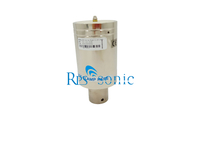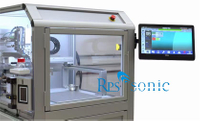Ultrasonic Defoaming Equipment Break Bubbles Noncontact
POWER ULTRASONICS DEFOAMING METHOD: A GREEN TECHNOLOGY
High intense ultrasonic waves are a clean and efficient procedure to break foam bubbles. The airborne ultrasonic defoamer is an electro-acoustic device capable of generating ultrasonic waves of high intensity which efficiently break foam bubbles without contaminating the treated solution. Hence, the ultrasonic system is not in direct contact with the multiphase fluid whilst in operation. The mechanism of ultrasonic defoaming is a combination of the following effects: high acoustic pressure, radiation pressure, resonance of bubbles and acoustic streaming. Other factors, such as the atomization of the bubble surface, may also contribute to foam rupture. The effectiveness of high-power ultrasonics in defoaming has been previously investigated at laboratory stage. Nevertheless, until now, there were no ultrasonic defoaming systems commercially available.
Core Principle: How Does Ultrasonic Defoaming Work?
Ultrasonic defoaming technology relies primarily on the physical destruction of foam structures by acoustic energy. Its principle can be broken down into the following steps:
Energy Transfer: Ultrasonic waves of a specific frequency and power propagate through a gas medium (such as air), transferring their vibrational energy to the foam.
Induced Resonance: The foam film has its own inherent vibrational frequency. When the frequency of the incoming ultrasonic wave approaches or coincides with this inherent frequency, resonance is induced.
Structural Instability: Resonance violently shakes and stretches the film, causing it to become thinner and distorted. This violent vibration destabilizes the film, exceeding the limit of its surface tension.
Film Rupture: Ultimately, the severely weakened film ruptures, causing bubbles to coalesce or disappear, thus achieving defoaming.
To use a simple analogy: just as an opera singer shatters a glass with a high note, ultrasound uses the "right pitch" (frequency) to rupture the foam's "film."
Operating Modes:
Non-contact: The ultrasonic radiator is mounted a certain distance above the foam, eliminating contact with the material. This makes it ideal for clean environments (such as food and pharmaceutical applications).
In-line: Installed directly on the pipe or tank wall, it continuously defoams the flowing material.
Advantages:
Efficient and fast: Defoams foam almost instantly.
Clean and pollution-free: This is a purely physical method that requires no chemical defoaming agents and does not alter the product's composition, taste, color, or properties. This is its greatest advantage.
Automated Intelligent Control: Can be linked with sensors to achieve precise control—"operate when bubbles are present, stop when bubbles are absent"—saving energy.
Low Maintenance: No moving parts, long life; only the radiation head needs to be kept clean.
Summary
In summary, ultrasound can be an effective and clean physical defoaming method. It works by using sound wave energy to disrupt the stable structure of foam.
 English
English

